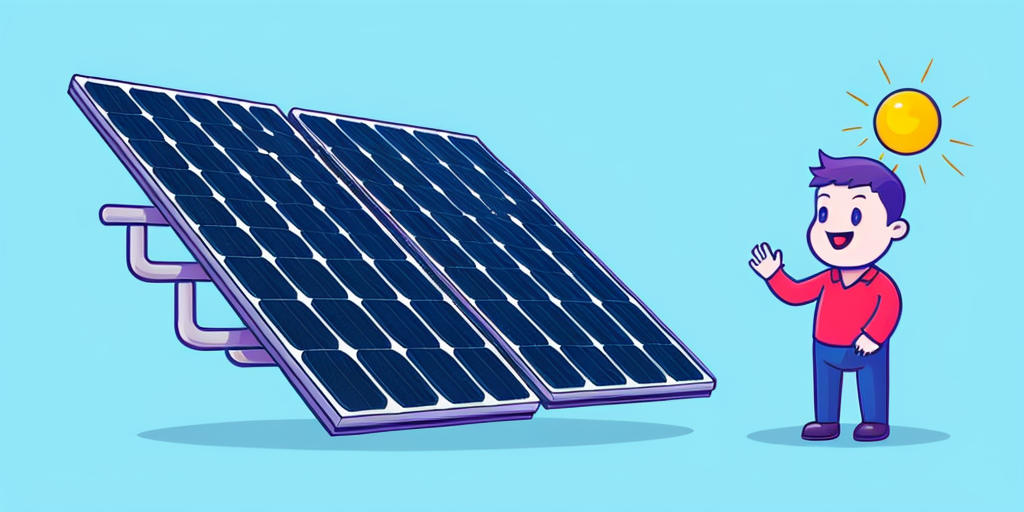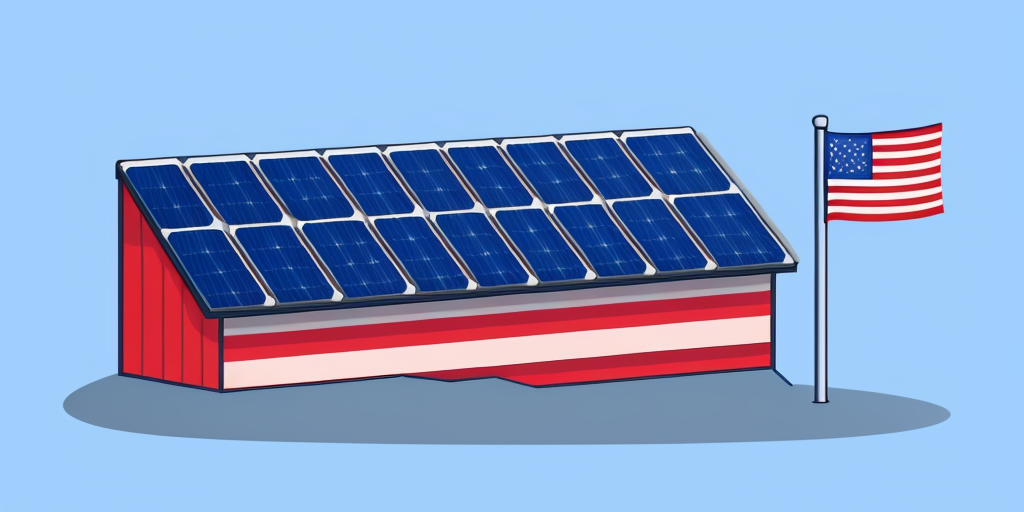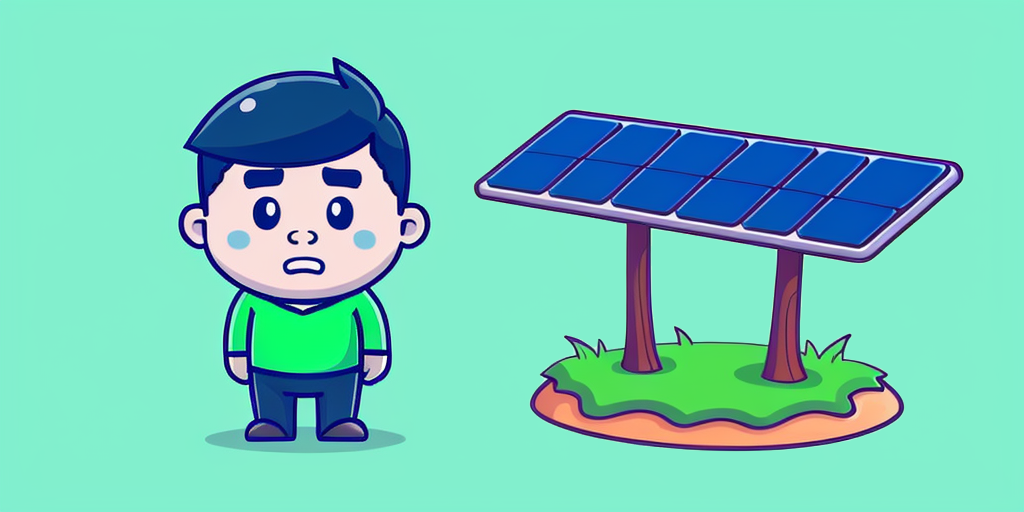So, you want to go solar and you’ve discovered that there are quite a few people in your neighborhood who share the same desire? Then community solar is your ideal solution. Just as neighborhood garage sales bring people together, community solar projects can unite those passionate about renewable energy. It’s where the age-old adage “sharing is caring” intersects with the commitment to preserving our planet. In this article, we’re shining a light on community solar farms — what they are, how they work, their pros and cons, and how to bring them to your area. So let’s delve into the fascinating world of community solar together and see how you and your neighbors can benefit from this shared approach to renewable energy.
Community solar is essentially a solar-powered twist to the concept of collective economics. Everyone contributes, everyone benefits. A community solar project is ideal for people who are solar-curious but don’t have the means or the suitable conditions to install their own solar panel system — for example if you’re an apartment owner with a roof that is unable to host a solar system, if you’re an apartment renter or if you live in a multi-tenant building.
Community solar projects work on the principle of shared solar or collective solar power generation. We’re talking about neighbors, friends, families, businesses, municipalities, and others getting together to fund a solar farm collectively. The electricity produced by the community solar farm then lights up their homes and powers their appliances. It’s a smart, scalable, and community-driven approach to clean energy that really turns up the heat on traditional energy options.
Community solar projects represent a collective effort to harness the power of the sun for shared benefit. These projects involve setting up a large-scale solar farm, often initiated by utilities, independent developers, or nonprofit organizations. Picture a vast farm, but instead of livestock or crops, it’s filled with arrays of solar panels. Their purpose? To absorb and convert sunlight into practical, usable electricity.

When you join a community solar project, you are effectively purchasing a “share” of the solar energy produced by this farm. The size of your share is typically tailored to your electricity consumption needs. The larger your share, the more electricity you receive from the project.
A critical component of community solar is the process of crediting the energy produced from your share to your electricity bill, a concept referred to as “virtual net metering”. But what does this mean? Virtual net metering is an arrangement that enables you to receive credit on your electricity bill for the solar power generated from your share, even if the solar farm is not located on your property. The electricity your share produces is fed into the grid, and you receive energy credits equivalent to the amount of energy your share generated. These credits are then used to offset your electricity usage at your home, essentially reducing or even nullifying your electricity bill. The result? You get to enjoy the benefits of solar power without the need for personal panel installations. This method not only contributes to the reduction of your environmental footprint but can also lead to potential savings on your monthly energy expenditure.
You can participate in community solar projects in two ways: through an ownership or subscription model. While some projects may only offer one of these alternatives, others allow you to pick between them. Let’s have a look at both models.
Think of the ownership model as owning a slice of the solar-powered pie. In this model, participants purchase a certain number of panels in the solar farm. The concept is similar to buying shares in a company. Just like owning shares gives you a right to the company’s profits, owning solar panels gives you a right to the electricity they produce.
Your panels act as your personal powerhouses, generating electricity that feeds into the grid. This output is metered, and you receive energy credits proportional to the amount of power your panels produce. These credits are then applied to your electricity bill, reducing your monthly costs.
By obtaining an ownership stake in a community solar project, you secure a certain percentage of electricity generated for the duration of the project. You can also benefit from a 30% federal tax deduction on your investment as a partial owner. But do keep in mind that owning a piece of a community solar project requires an initial investment on your part to cover upfront costs. If you move away from the solar farm’s utility’s service area, you will have to sell your share of solar panels.
The subscription model, on the other hand, is like a solar version of a monthly Netflix subscription. In this model, there is no requirement for any substantial upfront investment since you do not actually own any of the solar panels. Instead, you pay a regular fee—typically monthly—that entitles you to a certain share of the solar project’s energy output. This doesn’t mean you’re only paying for the electricity you use; rather, this fee also covers your participation in the project.
This fee is typically 5 – 15% lower than your normal utility bill, which means you generally save money each month. To be more precise, the solar energy you are attributed from the project helps to offset your regular electricity consumption. As such, your net electricity costs are usually lower with the subscription fee included than they would be without participating in the community solar project. Do bear in mind that subscription costs might incrementally increase over time due to various factors. However, you are generally free to cancel your subscription after giving notice.
To get community solar in your area, you first need to check if there is a program already in place. Utility companies, solar developers, or non-profits often manage these projects. If your town is already buzzing with solar energy, joining in is as simple as signing up. If no projects are currently available in your area, you might be the trailblazer your community needs.

Before you embark on your project, the foremost question to address is who will consume the electricity produced by the community solar farm. Your answer will determine where your community solar project will be set up. On-site solar farms are commonly found in private communities or subdivisions. The power they generate is typically owned by a housing complex and then sold to its residents. Alternatively, and more commonly, there are off-site solar farms, located at a separate location from where the produced energy is consumed. Once you’ve figured out who will consume the electricity produced from the solar farm, you would need to connect with interested parties — neighbors, local businesses, schools etc. Gathering support is fundamental, you need people who are committed and ready to invest time and resources.
To start the project, you’ll need to work with local authorities, utilities, and solar providers to select the site for your community solar project. The selection of a site for your community solar project is a significant decision. It’s vital to choose a location with ample sunlight, minimal shading, and a favorable topography for a ground-mounted system. Legally, the proposed site must comply with local size, offset, and zoning requirements, as well as regulations related to environmental or historic sites. Lastly, you’d need to figure out the administration, maintenance, and billing processes. Do keep in mind that it can take from 3 to 5 years to get all the necessary permits, licenses and approvals; while building the solar farm can take anywhere from 6 to 12 months.
Here are some effective online resources that can help you identify a community solar program near you:
Remember, the availability of community solar projects can vary widely depending on your location. If you don’t find an existing project in your area, don’t be discouraged. There are many resources available to help you start your own.
If you thought community solar was a niche market, think again. These projects are spreading like wildfire across the globe, from big cities to small towns. According to SEIA, in the U.S, there are currently 41 states plus D.C. that have at least one community solar project, with states like Minnesota, Massachusetts, and New York leading the charge.

In Europe, community solar is also having its moment in the sun. Particularly, Germany and the UK have been embracing the “community energy” model. Countries like Australia and India have also jumped onto the community solar bandwagon. So, whether you’re enjoying a bratwurst in Berlin or a curry in Kolkata, you’re never too far from a community solar project.
Joining a community solar project is a practical way to enjoy the benefits of solar energy without the constraints that come with installing your own solar system. It’s a way to save on your electricity bill, reduce your carbon footprint, and support your local economy.

If you’re someone who wants to switch to renewable energy but doesn’t have the means or conditions to install your own solar panels, community solar is a great alternative. It’s also an excellent option if you want to invest in solar power but are unsure about the long-term commitment of having your own solar installation.
The sun offers many benefits, and community solar farms help make this accessible to all. Here are some reasons why community solar projects can be a brilliant decision.
Historically, renters have been kind of excluded from enjoying the benefits of solar energy. Community solar initiatives present a solution to this problem by eliminating the need for property ownership to gain access to clean, affordable energy.
Many homes are not suitable for rooftop solar installations due to lack of space, orientation, or shading issues. In such cases, community solar projects can be the key to unlocking the sun’s potential as they are typically located in areas that maximize solar energy output.
For those planning to move or sell their home, participating in a community solar initiative offers a simpler and quicker path to clean energy compared to installing rooftop panels. The flexibility allows for easy transfer of solar share to the new home within the same utility service territory or even selling the share if moving farther away.
Not everyone is a fan of the look of rooftop solar panels. If maintaining your home’s aesthetic appeal is a concern, community solar is the perfect choice. It allows participants to enjoy the economic benefits of solar power without changing their home’s appearance
With community solar, you can forget about maintenance chores. Unlike rooftop solar, where the onus of system monitoring falls on homeowners, community solar projects are managed by professionals who ensure optimal performance.
While Net Metering is used for residential or commercial solar installations, where the solar panels are sited at the place of electricity consumption, Virtual Net Metering is applied for off-site solar installations like community solar projects. Here, participants receive credits on their bill for their share of the power generated by the solar project, irrespective of the fact that the electricity is produced at a different location. The “virtual” refers to the off-site generation of electricity, and the size of the credit depends on the participant’s share in the project.
One key economic principle that plays out in favor of community solar is the economy of scale. The larger the solar installation, the lower the average cost per watt. As a result, community solar projects, due to their larger size, can offer lower setup costs than individual residential installations. This potential for lower costs can make community solar an economical choice, especially if the project is effective in passing on these savings to participants.
While community solar has many benefits, there can be a few potential downsides:

Despite these potential disadvantages, many people find that the benefits of community solar outweigh the downsides. It provides a unique opportunity to access solar power, support the local economy, and promote sustainability, making it an attractive option for many communities.
Community solar farms have been sprouting up like sunflowers all around the globe. Let’s take a virtual tour of some noteworthy examples:
1. SolarShare in Canada: This project boasts of being North America’s largest solar bond issuer. The SolarShare cooperative includes over 2,000 members and operates 39 solar projects across Ontario. Their projects range from rooftop installations on local businesses and farms to large ground-mounted projects.
2. Community Energy Scotland: As part of their mission to strengthen local economies through renewable energy, they’ve developed community-owned wind, hydro, and solar projects across the country. They have over 400 community and locally owned renewable energy installations.
3. Som Energia in Spain: This renewable energy cooperative has developed various solar projects across Spain. They began in 2010 and now have over 83,000 members. Their projects encompass a variety of settings, from residential to industrial.
4. Hepburn Wind in Australia: While not a solar project, this community-owned wind farm deserves an honorary mention. The project generates enough power for over 2,000 homes and returns profits back to the community.
As for the future, community solar is looking pretty bright. As more people seek to lower their carbon footprint and electricity costs, community solar is likely to become more common. Not only in suburbs but also in urban areas, where rooftop space is often underutilized.
As for solar energy options for homeowners, apartment owners and renters are ideal candidates for community solar. Since most apartment owners and renters can’t install their own panels, they can instead buy a share in a community solar project. This way, they can still benefit from solar power without having to own a roof.
In the grand tapestry of renewable energy, community solar represents a colorful patchwork quilt — diverse, inclusive, and a testament to the power of coming together. It marries the principles of shared economies and sustainability, offering a potent solution to modern energy challenges. Whether you live in a charming villa in the suburbs, a chic city apartment, or just about anywhere in between, community solar provides a sunny opportunity to tap into renewable energy. It’s the promise of a brighter, cleaner future — one community at a time.
But as with any endeavor worth undertaking, community solar also comes with its challenges. Understanding the intricacies of the contract, potential exit fees, and variable savings are just a few aspects potential subscribers should consider. However, with careful planning and collaboration, these hurdles can be effectively managed. Community solar, in its essence, is a testament to human ingenuity and the power of collective action.
It takes about 6 to 8 acres to accommodate the necessary equipment and spacing between panel rows for a 1 MW solar farm.
You can join a community solar farm by purchasing or leasing a share of the solar panels. This can typically be done through a solar provider or local utility company that offers community solar options.
Community solar farms are typically maintained by the solar provider or the organization that manages the farm. This maintenance is often covered in the cost of your subscription or lease.
If you move within the same utility area, you can typically continue participating in the community solar farm. If you move outside the area, your options will depend on the specific terms of your contract.
The majority of community solar consumers save between 5 and 15% on their monthly electricity costs.
Stay a while and read more posts like this
In recent years, Europe has witnessed a remarkable surge in the adoption of solar panels, marking a pivotal shift towards renewable energy. Data from the...
Renewable Energy, Solar Energy, Solar Energy Basics, Solar Technology
“Unlock the Truth: Get the Facts on Solar Energy!” Introduction Solar energy is becoming increasingly popular as a renewable energy source, but there are...
Imagine a world where you’re able to cut your monthly energy expenditure substantially. A reality where your home isn’t reliant on finite,...